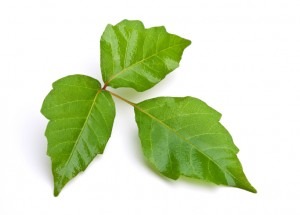Home Maintenance Tip: How to Kill Poison Ivy
Posted on September 12, 2014
Have you ever had a case of poison ivy? Most of us have with an estimate of 50-85% of people in the United States being allergic to poison ivy. A bad case of poison ivy can lead to serious itching, as well as blisters, sores, lesions and even infection.
Poison ivy is growing more quickly than in past decades. In addition, urushiol oil found in the sap that causes the allergic reaction has become more potent. Since prevention is preferable to dealing with a case of poison ivy, it’s best to rid your yard of all poison ivy.
Before you try to kill or remove poison ivy, consider these points:
- Be certain what poison ivy looks like. Look for clusters of three leaves. Poison ivy can grow as a vine or as a single plant. The leaves are broad and typically green in the spring and summer, but turn red in the fall. Poison ivy vines are hairy or furry. It is important to remember that all parts of the plant can cause an allergic reaction.
- Wear protective clothing such as gloves that can be thrown away, a long-sleeved shirt, long pants tucked into socks. When the task is complete, immediately wash the handle of any tools that you used before you remove your gloves. Put your clothes directly in the washing machine. Take a shower and wash thoroughly.
- Never burn poison ivy. Breathing the smoke can lead to serious lung complications.
- Either pull up the poison ivy by its roots or kill it. If you are going to pull it out by the roots, plan ahead for how you are going to dispose of the plant. If you can’t get the entire root, chop the root at least 8” down in the ground.
- There are various products for killing poison ivy. White vinegar can be used as a more natural product. Alternatively, you can use herbicides or “brush control chemicals.” If you use an herbicide containing glyphosate, it is a good idea to cut the concentration to 5-10% using water.
- No matter the product, simply spray the foliage making sure to soak the leaves and the vine.
- Be careful when spraying these products if it’s windy because they can damage other nearby desirable plants. If rain is predicted in the next 24 hours, hold off on spraying.
- Place newspaper underneath the poison ivy leaves and vine before spraying thoroughly, if the poison ivy is growing among important garden plants or trees.
- Allow 5-7 days to allow the product to move to the poison ivy roots.
- No matter what method you use, you may have to repeat the process to achieve full success.
Protect yourself and your family by removing poison ivy in your yard. If you are highly allergic, call in a professional yard service to assist you.
Please Like Us on our Facebook page or Follow Us on Google Plus
If you have questions about your home’s foundation or foundation repairs, contact Atlantic Foundation and Repair at 919-855-0855.
